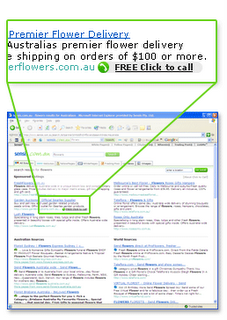 technorati tags: customer, interaction, voice, messaging, customer, contact
technorati tags: customer, interaction, voice, messaging, customer, contact
Tuesday, November 28, 2006
New Customer Interaction Report
Monday, November 27, 2006
Hey, We Have Poor Weather, We're Going to be Late!
Social Networks as Service Support
 Over at VentureBeat they report on a Health care network that operates as a social network, as opposed to just having bulletin boards. Some companies might not try this kind of thing because they don't want some customers telling other customers their bad experiences, or saying that a product or service hasn't lived up to that experience. In the modern world, this kind of information is going to get out there, especially for something as important as health care. What they miss, is the opportunity to listen, learn, and adapt. In an Irish context we have IrishHealth.com and it might be interesting to see how you can turn an active bulletin board into a true social network....
Over at VentureBeat they report on a Health care network that operates as a social network, as opposed to just having bulletin boards. Some companies might not try this kind of thing because they don't want some customers telling other customers their bad experiences, or saying that a product or service hasn't lived up to that experience. In the modern world, this kind of information is going to get out there, especially for something as important as health care. What they miss, is the opportunity to listen, learn, and adapt. In an Irish context we have IrishHealth.com and it might be interesting to see how you can turn an active bulletin board into a true social network....
 technorati tags: customer, interaction, voice, messaging, customer, contact
technorati tags: customer, interaction, voice, messaging, customer, contact
Friday, November 24, 2006
Devices Phone Home?
 technorati tags: customer, interaction, voice, messaging, customer, contact
technorati tags: customer, interaction, voice, messaging, customer, contact
Wednesday, November 22, 2006
Well, even for Google, Innovation isn't easy
 Techcrunch reports that Google may have pulled click2call functionality from its mapping site. Everyone agrees that there is huge value in the general capability, but innovations once released into the wild will be used by customers in ways you did not expect.
Techcrunch reports that Google may have pulled click2call functionality from its mapping site. Everyone agrees that there is huge value in the general capability, but innovations once released into the wild will be used by customers in ways you did not expect.
That's one reason why at VoiceSage we develop in iterations, and nearly always in concert with the real and expressed feedback from our users and customers. To do this effectively you need "flexibility" in the underlying platform. The question it should raise for people looking to adopt and deploy services is "does this this service provider look like they will evolve with my requirements".
 technorati tags: customer, interaction, voice, messaging, customer, contact
technorati tags: customer, interaction, voice, messaging, customer, contact
Tuesday, November 21, 2006
Skype 3.0

A great article from Telepocalypse, Martin Geddes on why Skype 3.0 might be interesting from the corporate point of view. For me, one of the interesting things is that if "you and I" are on a skype call, and you ask me to fill in a form, we could do that through a Skype-add-on. We could then pay using PayPal, and complete our transaction. In theory, if I had various "presence" options on my skype, and permissions attached to my contact list, I could "allow my contacts" to complete various forms, and transactions, based on those permissions.
 technorati tags: customer, interaction, voice, messaging, customer, contact
technorati tags: customer, interaction, voice, messaging, customer, contact


